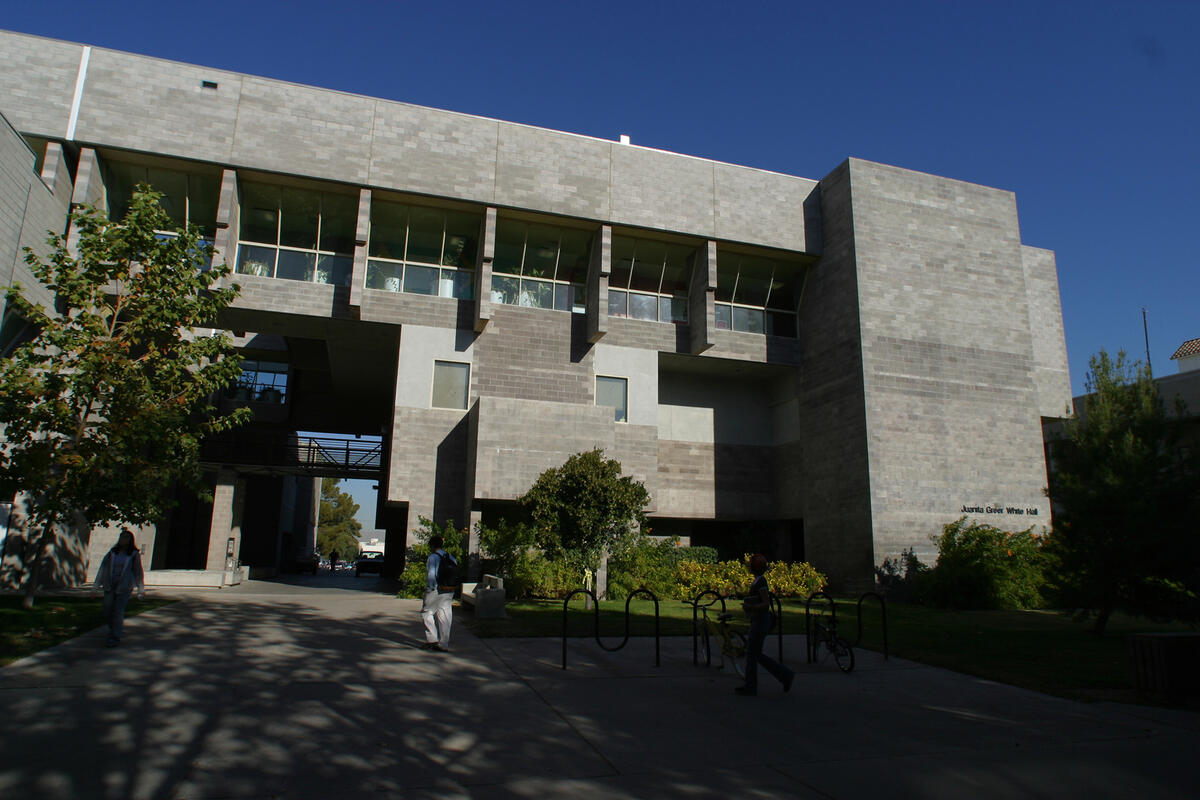
Facilities & Laboratories
The School of Life Sciences is housed in the Juanita Greer White Life Sciences Building, which is located near the center of campus within easy walking distance of the other science and engineering buildings. Dedicated in 1976, the building is designed around an atrium, and houses offices, laboratories, and classrooms.
Confocal and Biological Imaging Core
The CBI core provides access to confocal microscopy for all Nevada researchers. The central piece of equipment in this multi-user facility is a state-of-the-art Nikon A1R confocal laser scanning microscopy system (CLSM) with a resonance scanner for high-speed imaging of living samples and spectral unmixing for advanced applications. Two additional digital imaging systems are available for epifluorescence and other types of light microscopy: a high resolution charge-coupled device (CCD) and a highly sensitive electron-multiplying CCD (EMCCD).
Ecophysiological Research Facility
This greenhouse facility is located on the UNLV campus and has a number of controlled environment areas for research. In addition to temperature-controlled areas for general research, the greenhouse has a separate area for elevated carbon dioxide studies.
Elevated CO2 Desert Environment Facility
The elevated carbon dioxide treatment rooms are set up to mimic natural conditions as much as possible. Inside temperatures and light are close to the ambient conditions outside of the glasshouse building. Currently, the environment of the carbon dioxide treatment rooms is controlled to the same temperature and relative humidity as the ambient carbon dioxide room. In one of the current experiments, ecophysiological data are being collected on a number of desert species grown in meter-tall pots constructed from PVC sewer-pipe. Plants are growing in a sandy soil that includes a desert soil component, and are watered with 0.75 liters of a weak nutrient solution, weekly. (The pots with Larrea tridentata are the only exception: these plants are watered every two weeks.) Experimental species include Larrea tridentata, Oryzopsis hymenoides, Hilaria rigida, Bromus rubens, and Camissonia claviformis. Other experiments currently running in the facility involve Yucca whipplei, Phaseolus spp, and Pisum sativum. The experiments run at the facility are specifically designed to support research at the Nevada Desert FACE Facility.
Genomics Core Facility
The Genomics Facility is designed to aid researchers in studying the properties and functions of genes and their products. The facility provides equipment and training for DNA microarray handling, Western blot/gel/microarray scanning, PCR amplification, and analysis of DNA, RNA, and protein samples. The facility is located in the Science and Engineering Building, Rooms 3122, 3123, and 3124.
Wesley E. Niles Herbarium
The Wesley E. Niles Herbarium is a collection of dried, pressed plant specimens mounted on archival-quality sheets of paper that are placed in folders and stored in cabinets. These specimens provide tangible documentation for the occurrence, distribution, and diversity of flowering plants, conifers, and mosses in the Southwestern desert regions of the United States, especially the Mojave Desert.